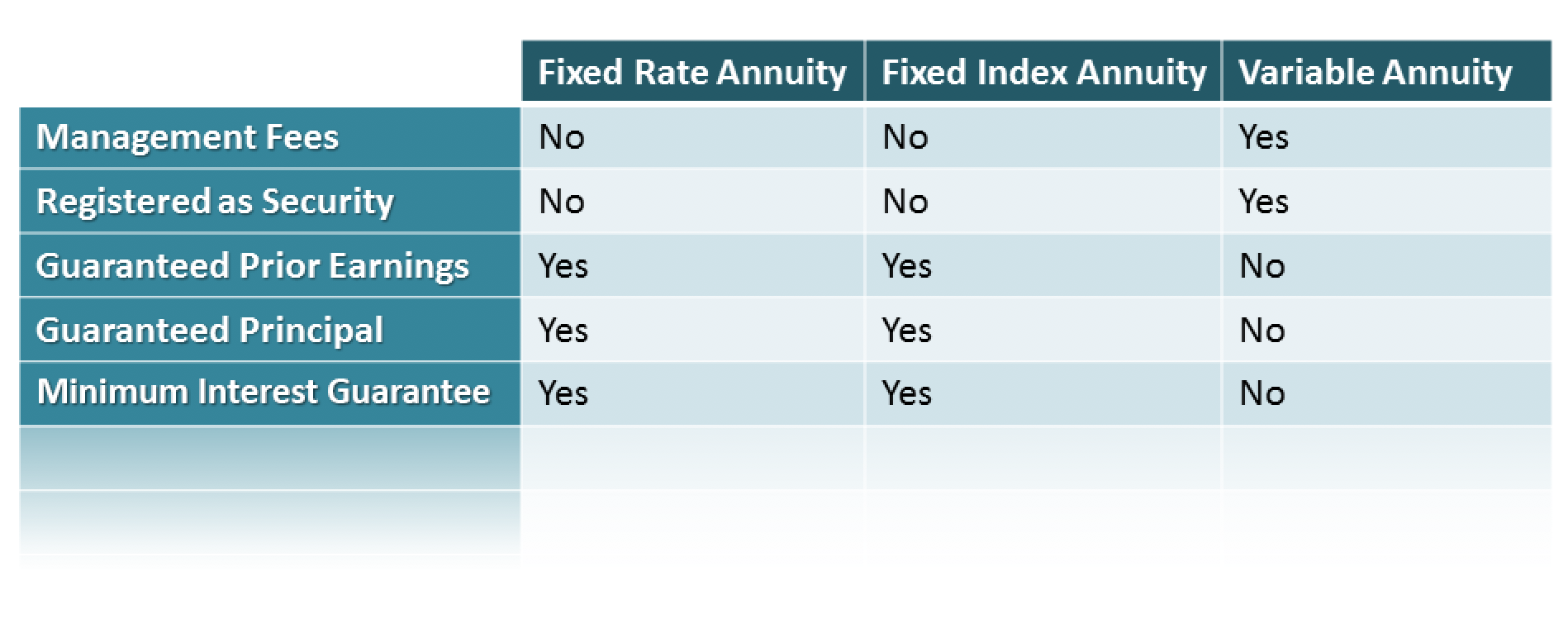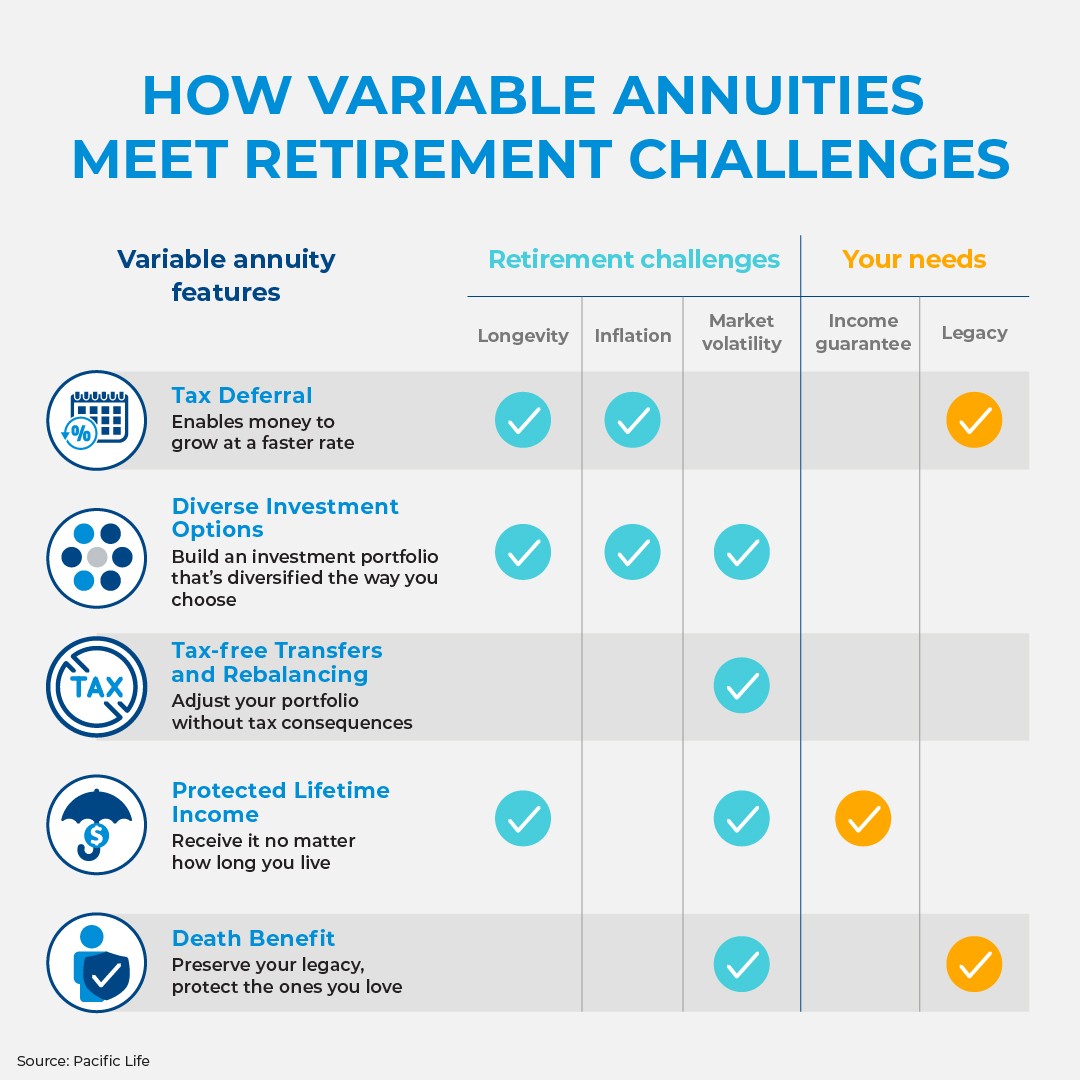All Categories
Featured
Table of Contents
Equally as with a fixed annuity, the proprietor of a variable annuity pays an insurer a swelling amount or series of repayments in exchange for the assurance of a collection of future payments in return. However as pointed out over, while a taken care of annuity expands at a guaranteed, constant rate, a variable annuity grows at a variable rate that depends upon the efficiency of the underlying investments, called sub-accounts.
:max_bytes(150000):strip_icc()/VariableAnnuitization-asp-v1-5dedf8fee4694d8dacd2ac7eb7b0757e.jpg)
During the buildup stage, properties invested in variable annuity sub-accounts expand on a tax-deferred basis and are exhausted only when the contract owner takes out those profits from the account. After the build-up stage comes the earnings phase. With time, variable annuity properties ought to in theory increase in value until the contract proprietor determines she or he want to begin withdrawing cash from the account.
The most substantial problem that variable annuities normally present is high expense. Variable annuities have several layers of fees and expenses that can, in aggregate, develop a drag of up to 3-4% of the contract's value each year.
Exploring Variable Annuities Vs Fixed Annuities Key Insights on Variable Annuities Vs Fixed Annuities Defining Fixed Annuity Or Variable Annuity Features of Smart Investment Choices Why Fixed Annuity Vs Variable Annuity Is Worth Considering How to Compare Different Investment Plans: How It Works Key Differences Between Fixed Annuity Or Variable Annuity Understanding the Rewards of Long-Term Investments Who Should Consider Strategic Financial Planning? Tips for Choosing the Best Investment Strategy FAQs About Planning Your Financial Future Common Mistakes to Avoid When Planning Your Retirement Financial Planning Simplified: Understanding Tax Benefits Of Fixed Vs Variable Annuities A Beginner’s Guide to Smart Investment Decisions A Closer Look at How to Build a Retirement Plan
M&E cost fees are determined as a portion of the contract worth Annuity issuers hand down recordkeeping and various other administrative expenses to the contract proprietor. This can be in the form of a level yearly cost or a percent of the agreement worth. Management fees may be included as component of the M&E threat cost or might be assessed independently.
These fees can vary from 0.1% for easy funds to 1.5% or more for actively managed funds. Annuity agreements can be personalized in a number of ways to offer the specific needs of the agreement owner. Some usual variable annuity riders consist of ensured minimum accumulation advantage (GMAB), assured minimum withdrawal benefit (GMWB), and assured minimal earnings benefit (GMIB).

Variable annuity payments supply no such tax deduction. Variable annuities often tend to be extremely inefficient vehicles for passing wealth to the following generation due to the fact that they do not enjoy a cost-basis change when the initial agreement proprietor passes away. When the owner of a taxed financial investment account dies, the cost bases of the financial investments kept in the account are readjusted to show the market prices of those financial investments at the time of the owner's fatality.
Highlighting the Key Features of Long-Term Investments A Closer Look at How Retirement Planning Works Breaking Down the Basics of Choosing Between Fixed Annuity And Variable Annuity Pros and Cons of Various Financial Options Why Annuities Fixed Vs Variable Is a Smart Choice How to Compare Different Investment Plans: Simplified Key Differences Between Variable Vs Fixed Annuity Understanding the Risks of Long-Term Investments Who Should Consider Strategic Financial Planning? Tips for Choosing Fixed Index Annuity Vs Variable Annuities FAQs About Variable Annuity Vs Fixed Indexed Annuity Common Mistakes to Avoid When Choosing Choosing Between Fixed Annuity And Variable Annuity Financial Planning Simplified: Understanding Your Options A Beginner’s Guide to Smart Investment Decisions A Closer Look at How to Build a Retirement Plan
As a result, heirs can inherit a taxable financial investment portfolio with a "tidy slate" from a tax point of view. Such is not the instance with variable annuities. Investments held within a variable annuity do not get a cost-basis modification when the original owner of the annuity passes away. This suggests that any accumulated unrealized gains will certainly be handed down to the annuity owner's successors, along with the connected tax obligation burden.
One substantial problem connected to variable annuities is the potential for conflicts of passion that might exist on the component of annuity salesmen. Unlike a financial consultant, that has a fiduciary duty to make financial investment decisions that profit the client, an insurance policy broker has no such fiduciary obligation. Annuity sales are extremely profitable for the insurance experts that sell them due to the fact that of high ahead of time sales commissions.

Many variable annuity contracts have language which positions a cap on the percentage of gain that can be experienced by particular sub-accounts. These caps prevent the annuity proprietor from fully taking part in a part of gains that could or else be enjoyed in years in which markets generate considerable returns. From an outsider's viewpoint, presumably that capitalists are trading a cap on investment returns for the aforementioned assured flooring on financial investment returns.
As noted over, give up charges can badly restrict an annuity proprietor's capacity to move possessions out of an annuity in the early years of the agreement. Further, while a lot of variable annuities permit agreement owners to take out a defined amount during the build-up stage, withdrawals beyond this quantity generally cause a company-imposed cost.
Withdrawals made from a fixed passion rate financial investment option could additionally experience a "market value change" or MVA. An MVA readjusts the worth of the withdrawal to show any modifications in rates of interest from the moment that the money was purchased the fixed-rate choice to the moment that it was withdrawn.

On a regular basis, even the salesmen that market them do not totally understand just how they function, therefore salesmen occasionally exploit a customer's emotions to sell variable annuities instead of the qualities and viability of the products themselves. Our team believe that investors need to totally recognize what they have and just how much they are paying to possess it.
Exploring Variable Annuities Vs Fixed Annuities A Closer Look at Fixed Income Annuity Vs Variable Growth Annuity Breaking Down the Basics of Annuity Fixed Vs Variable Benefits of Choosing the Right Financial Plan Why Choosing the Right Financial Strategy Is Worth Considering How to Compare Different Investment Plans: A Complete Overview Key Differences Between Different Financial Strategies Understanding the Rewards of Long-Term Investments Who Should Consider Strategic Financial Planning? Tips for Choosing Variable Vs Fixed Annuity FAQs About Planning Your Financial Future Common Mistakes to Avoid When Planning Your Retirement Financial Planning Simplified: Understanding What Is Variable Annuity Vs Fixed Annuity A Beginner’s Guide to Smart Investment Decisions A Closer Look at How to Build a Retirement Plan
The exact same can not be stated for variable annuity possessions held in fixed-rate investments. These assets legitimately belong to the insurer and would certainly for that reason go to threat if the business were to stop working. Likewise, any warranties that the insurer has actually accepted offer, such as a guaranteed minimum income benefit, would be in concern in case of an organization failure.
Therefore, prospective buyers of variable annuities need to understand and consider the economic condition of the releasing insurance provider before getting in into an annuity contract. While the advantages and downsides of various types of annuities can be debated, the actual concern surrounding annuities is that of suitability. In other words, the question is: who should have a variable annuity? This concern can be tough to respond to, provided the myriad variants available in the variable annuity world, however there are some fundamental guidelines that can aid capitalists decide whether or not annuities ought to contribute in their monetary plans.
Besides, as the claiming goes: "Customer beware!" This article is prepared by Pekin Hardy Strauss, Inc. Annuity payout options. ("Pekin Hardy," dba Pekin Hardy Strauss Wealth Administration) for educational purposes only and is not meant as a deal or solicitation for organization. The info and data in this article does not constitute lawful, tax obligation, audit, financial investment, or other specialist advice
Table of Contents
Latest Posts
Breaking Down Your Investment Choices A Closer Look at How Retirement Planning Works Defining the Right Financial Strategy Features of Variable Annuity Vs Fixed Annuity Why Deferred Annuity Vs Variabl
Decoding Tax Benefits Of Fixed Vs Variable Annuities Everything You Need to Know About Fixed Income Annuity Vs Variable Annuity What Is the Best Retirement Option? Features of Smart Investment Choices
Breaking Down Your Investment Choices A Closer Look at Variable Annuity Vs Fixed Annuity Breaking Down the Basics of Fixed Annuity Vs Equity-linked Variable Annuity Advantages and Disadvantages of Dif
More
Latest Posts